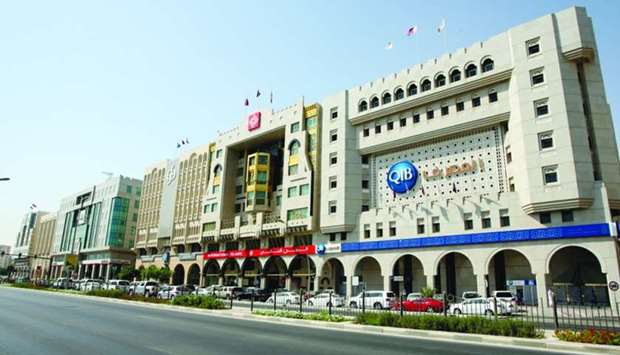Qatar’s commercial banks have been increasing liquidity from abroad in the form of a number of debt issues, and cash injections from the Qatar Investment Authority have bolstered banks' liquidity, the Economist Intelligence Unit (EIU) has said in an update.
The ratio of non-performing loans as a proportion of total loans disbursed by the local banks has historically been low, but it is “likely to rise” in the short term, EIU noted in a risk assessment.
“Banking sector risk is BB-rated. It is supported by a strong regulatory framework and solid capital and liquidity indicators,” the EIU said.
Despite the current account moving into deficit in 2020-21, the currency regime should be able to weather the short-term shocks posed by the coronavirus pandemic, according to the update.
“Exports are expected to decline in 2020, but the riyal's peg to the US dollar is backed by ample foreign reserves and the assets of the Qatar Investment Authority (the sovereign wealth fund), the EIU said and noted the currency risk is BB-rated.
The economic shock from the coronavirus pandemic is expected to lead to a recession, a drop in goods export earnings and a shift to a significant fiscal deficit. This will lead to a surge in fiscal financing needs.
However, the EIU emphasised Qatar's ability to fully service its debt obligations remains strong.
Qatar's overdependence on hydrocarbons exports leaves it exposed to international price movements, it said. Efforts to promote economic diversification will be hampered by the oil price slump and the ongoing blockade of Qatar (by a quartet of Arab nations).
“The country's large stock of public debt weighs on the outlook, but a sound financial system is supportive,” the EIU said.
In a recent update, the EIU said Qatar’s real economic growth will remain stable throughout most of the long-term forecast period. However, economic diversification investment projects will sustain robust growth until 2030, before slowing thereafter.
There remains potential for bursts of high growth if further gas export projects, beyond those planned for the mid-2020s, are approved by the government.
“Diversification and the expansion of the services sector, funded by the State's hydrocarbons wealth, will also provide opportunities for growth. The population will continue to increase, largely through immigration, to 3.9mn in 2050. As a result, growth in real GDP per head will be much slower than growth in real GDP,” the EIU said.
“Banking sector risk is BB-rated. It is supported by a strong regulatory framework and solid capital and liquidity indicators,” the EIU said.
Despite the current account moving into deficit in 2020-21, the currency regime should be able to weather the short-term shocks posed by the coronavirus pandemic, according to the update.
“Exports are expected to decline in 2020, but the riyal's peg to the US dollar is backed by ample foreign reserves and the assets of the Qatar Investment Authority (the sovereign wealth fund), the EIU said and noted the currency risk is BB-rated.
The economic shock from the coronavirus pandemic is expected to lead to a recession, a drop in goods export earnings and a shift to a significant fiscal deficit. This will lead to a surge in fiscal financing needs.
However, the EIU emphasised Qatar's ability to fully service its debt obligations remains strong.
Qatar's overdependence on hydrocarbons exports leaves it exposed to international price movements, it said. Efforts to promote economic diversification will be hampered by the oil price slump and the ongoing blockade of Qatar (by a quartet of Arab nations).
“The country's large stock of public debt weighs on the outlook, but a sound financial system is supportive,” the EIU said.
In a recent update, the EIU said Qatar’s real economic growth will remain stable throughout most of the long-term forecast period. However, economic diversification investment projects will sustain robust growth until 2030, before slowing thereafter.
There remains potential for bursts of high growth if further gas export projects, beyond those planned for the mid-2020s, are approved by the government.
“Diversification and the expansion of the services sector, funded by the State's hydrocarbons wealth, will also provide opportunities for growth. The population will continue to increase, largely through immigration, to 3.9mn in 2050. As a result, growth in real GDP per head will be much slower than growth in real GDP,” the EIU said.


